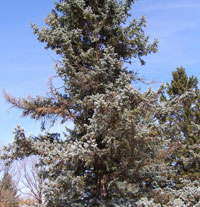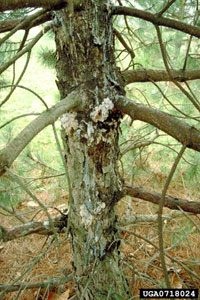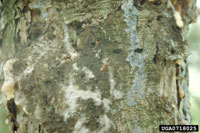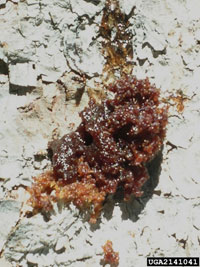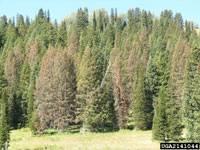Extension > Garden > Diagnose a problem > What's wrong with my plant? > Evergreen Trees and Shrubs > Spruce > Sap on trunk or branches
Spruce > Trunk or branches > Sap on trunk or branches
1 of 3
Cytospora canker
Leucostoma kunzei
- Needles on one or more branches turn completely brown or purplish brown then fall off
- Scattered dead branches occur throughout the tree, often starting on the lower branches and then spreading upward
- Clear to white resin encrusted cankers on infected branches
- Common on Colorado blue spruce, or very stressed spruces
- More information on Cytospora canker
2 of 3
Pitch mass borer
Synanthedon pini
- Pitch masses with frass (sawdust mixed with droppings) on trunk
- Larger trees preferred, medium trees can also be attacked
- Needles can yellow
- Caterpillar has a light brown or yellowish-brown head and cream to greenish-yellow body
- More information on Pitch mass borer
3 of 3
Spruce beetle
Dendroctonus rufipennis
- Found in stands white spruce in northern Minnesota, particularly along the North Shore
- Prefers larger trees, 12 inch diameter trees or larger
- Needles discolor yellowish green to reddish brown
- Reddish brown sawdust around exit holes and on the bark and on the ground
- Pitch tubes develop around exit holes
- Trees eventually die
- Adult beetles are 1/4 inch long and black to reddish-brown; larvae are small, white legless grubs
- More information on Spruce beetle





